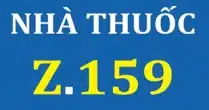Chưa có sản phẩm trong giỏ hàng.
ai-bit-invest.org
Understanding Cross-Chain Compatibility in Crypto Projects
Cryptocurrencies have seen a surge in popularity over the past few years, with new projects constantly entering the market. One of the key challenges facing the cryptocurrency industry is interoperability between different blockchain networks, known as cross-chain compatibility. In this article, we will explore the importance of cross-chain compatibility in crypto projects, the challenges it presents, and the solutions being developed to address them.
Importance of Cross-Chain Compatibility
Cross-chain compatibility refers to the ability of different blockchain networks to communicate and interact with each other. In the world of cryptocurrencies, where each project typically operates on its own blockchain, interoperability is crucial for the seamless transfer of assets, data, and information between different networks. Without cross-chain compatibility AI Invest Maximum, users would be limited to using only one blockchain network, severely restricting the potential applications and use cases of cryptocurrencies.
For example, imagine a user who wants to trade tokens on two different decentralized exchanges, each operating on a separate blockchain network. Without cross-chain compatibility, the user would have to go through a cumbersome process of converting tokens between different networks, incurring additional fees and delays in the process. With cross-chain compatibility, however, the user can seamlessly transfer tokens between different networks, enabling efficient and cost-effective trading.
Challenges in Achieving Cross-Chain Compatibility
Despite the clear benefits of cross-chain compatibility, achieving interoperability between different blockchain networks is no easy feat. There are several challenges that crypto projects need to overcome in order to ensure seamless communication and interaction between networks.
One of the key challenges is the lack of standardized protocols for cross-chain communication. Each blockchain network has its own set of rules, consensus mechanisms, and data structures, making it difficult for different networks to understand and interact with each other. Without a common language or protocol for cross-chain communication, achieving interoperability becomes a complex and time-consuming process.
Another challenge is the issue of trust between different blockchain networks. In order to transfer assets or data between networks, users need to trust that the transaction will be executed accurately and securely. Without a trusted intermediary or third party to facilitate cross-chain transactions, users may be reluctant to engage in cross-chain activities due to concerns about security and reliability.
Solutions for Cross-Chain Compatibility
In recent years, a number of solutions have been developed to address the challenges of cross-chain compatibility in crypto projects. One of the most promising approaches is the use of blockchain bridges, which act as connectors between different blockchain networks, enabling assets and data to be transferred securely and efficiently.
Blockchain bridges work by locking assets on one blockchain network and issuing corresponding tokens on another network, effectively creating a representation of the original asset on a different network. This allows users to transfer assets between different networks in a trustless and decentralized manner, without the need for a third party to oversee the transaction.
Another solution for cross-chain compatibility is the use of interoperability protocols, such as Polkadot and Cosmos. These protocols aim to create a unified framework for cross-chain communication, providing a set of standards and tools that enable different blockchain networks to interact with each other seamlessly. By using interoperability protocols, crypto projects can overcome the challenges of cross-chain compatibility and unlock new possibilities for decentralized applications and services.
Conclusion
In conclusion, cross-chain compatibility is a critical aspect of the cryptocurrency industry that enables seamless communication and interaction between different blockchain networks. By addressing the challenges of interoperability and implementing solutions such as blockchain bridges and interoperability protocols, crypto projects can unlock new opportunities for innovation and growth in the decentralized finance space.
As the crypto industry continues to evolve and expand, the importance of cross-chain compatibility will only increase, as more projects seek to connect with each other and create a unified ecosystem for digital assets. By understanding the significance of cross-chain compatibility and investing in the development of interoperability solutions, crypto projects can build a more connected and efficient blockchain network that benefits users and stakeholders alike.
Gọi Điện trực tiếp để được Dược sĩ, Bác Sĩ Nhà Thuốc Z159 tư vấn: 0377 963 359
